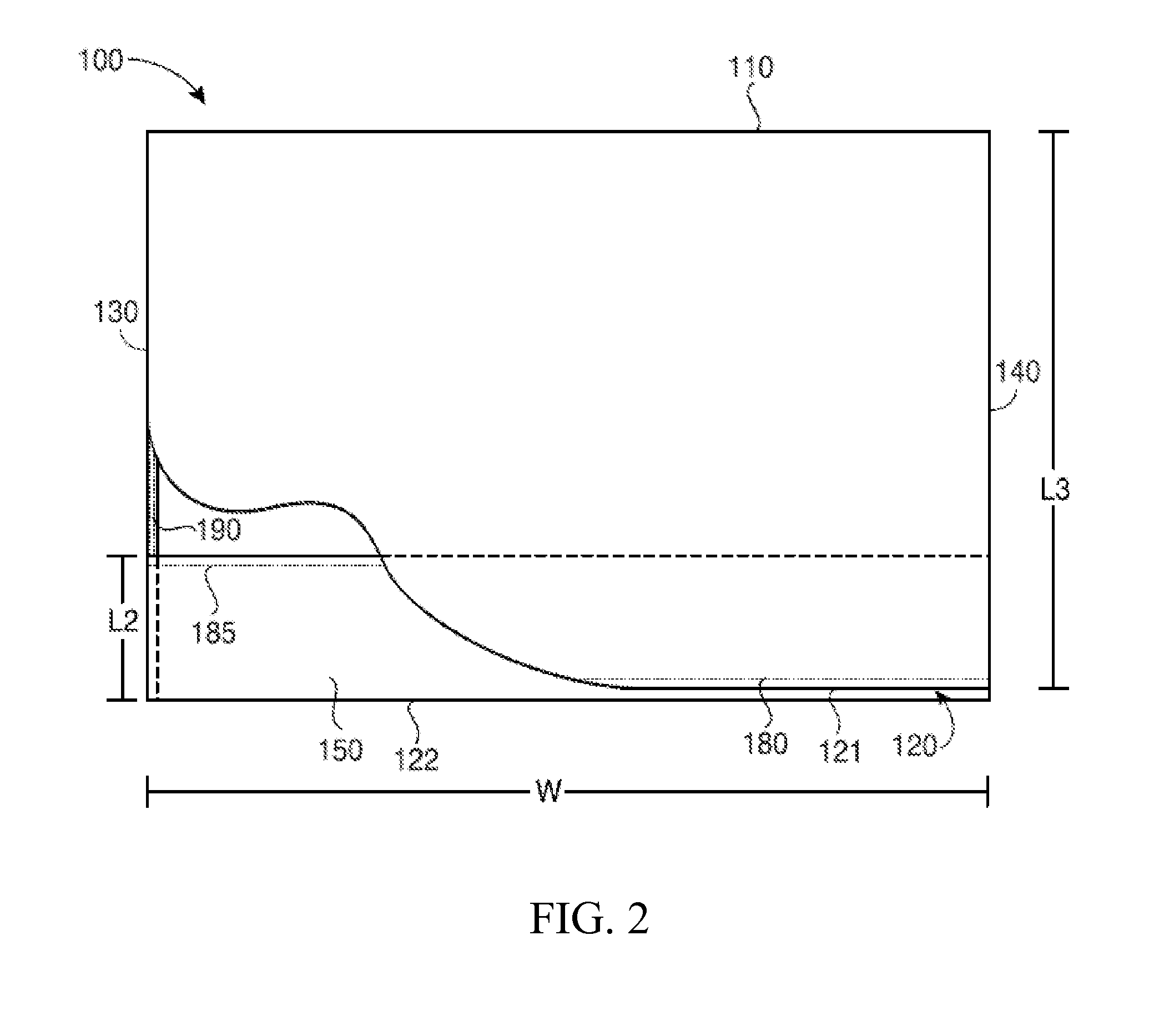Pillowcase construction and method of using same
a pillowcase and construction technology, applied in the field of pillow cases, can solve the problems of affecting the use of pillows, affecting the appearance of pillows, and oversized pillowcases, and achieve the effect of facilitating the ingress and egress of pillows, and loading pillows quickly and efficiently
- Summary
- Abstract
- Description
- Claims
- Application Information
AI Technical Summary
Benefits of technology
Problems solved by technology
Method used
Image
Examples
example 1
[0051]The following example is meant to be illustrative and prophetic only. In this example, a pillowcase is constructed from a single sheet of cotton. The cotton sheet has a width of about 41 inches. The top and bottom edges are hemmed along the width resulting in an overall length of about 45.75 inches. The length is divided into 3 segments—lowermost segment 2 is about 6 inches long, middlemost segment 1 is about 20 inches, and topmost segment 3 is about 19.75 inches long. Topmost segment 3 is folded down onto segment 1 so that segment 3 lies on top of segment 1 with edges aligned. Next segment 2 is folded up towards segment 3 so that segment 2 lies on top of segment 3 with edges aligned. Now each of the left and right edges of the pillowcase is sewn to secure segment 1 to segment 3 and to secure segment 2 to segment 3—the stitching along the right edge is about 0.5 inches, and the stitching along the left edge is about 0.5 inches. Finally, the entire pillowcase is inverted so tha...
example 2
[0052]The following example is meant to be illustrative and prophetic only. In this example a finished pillowcase is described. A pillowcase is constructed as described in Example 1. The finished pillowcase is generally rectangular in shape having four edges—a top edge, bottom edge, right edge and left edge. The final width of the finished pillowcase is about 40 inches—this accounts for the about 0.5 inches of stitching for the left edge and about 0.5 inches of stitching for the right edge which are now on the inside of the pillowcase and thus do not add to the overall width of the finished pillow case. The final length of the finished pillow case is about 20 inches. The interior pouch has a depth of about 6 inches and has a span of about 40 inches running from the left edge to the right edge. The pillowcase has an opening running the entire span of the bottom edge of the pillowcase and sized to receive a pillow.
example 3
[0053]The following example is meant to be illustrative and prophetic only. In this example a pillow is removed from an inventive pillowcase described in Example 2, and a pillow is inserted into an inventive pillowcase described in Example 2. A pillow positioned within the pillowcase is secured by the interior pouch of the pillowcase. In a first step the pillow is disengaged from the internal pouch and in a second step the pillow is entirely removed from the pillowcase. Next a pillow is loaded into the pillowcase by opening the bottom edge of the pillowcase and inserting the pillow into the pillowcase. In a subsequent step the pillow is secured within the interior of the pillowcase by engaging the internal pillowcase pouch with the pillow.
PUM
 Login to View More
Login to View More Abstract
Description
Claims
Application Information
 Login to View More
Login to View More - R&D
- Intellectual Property
- Life Sciences
- Materials
- Tech Scout
- Unparalleled Data Quality
- Higher Quality Content
- 60% Fewer Hallucinations
Browse by: Latest US Patents, China's latest patents, Technical Efficacy Thesaurus, Application Domain, Technology Topic, Popular Technical Reports.
© 2025 PatSnap. All rights reserved.Legal|Privacy policy|Modern Slavery Act Transparency Statement|Sitemap|About US| Contact US: help@patsnap.com



